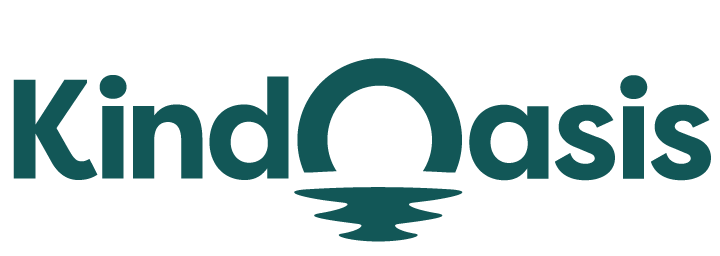How to Create an AI Chatbot for Your eCommerce Store
To create an AI chatbot, start by selecting a platform like VanChat, tailored for eCommerce. Define your chatbot's purpose, such as customer support or sales assistance. Design conversation flows that cover common queries, ensuring a seamless user experience. Integrate the chatbot with your website or app and continually monitor its performance. Regular updates and training will enhance its capabilities and effectiveness in engaging customers.
In-Depth Analysis of Creating an AI Chatbot for eCommerce
Creating an AI chatbot for your eCommerce store involves several critical steps to ensure it serves its purpose effectively. Let's delve deeper into each step:
1. Platform Selection
Choosing the right platform is fundamental. A platform like VanChat offers tools specifically designed for eCommerce scenarios. It's essential to evaluate platforms based on:
- Ease of Integration: Ensure that the platform can seamlessly integrate with your existing eCommerce infrastructure.
- Scalability: Choose a platform that can grow with your business needs.
- Customization Options: Look for platforms that allow for extensive customization to match your brand's voice. Discover how to customize ecommerce chatbot for better alignment.
Useful Tip: Utilize trial periods offered by platforms to test features before committing.
2. Define Your Chatbot’s Purpose
Clearly defining the purpose of your chatbot is crucial. Whether it's for customer support, sales assistance, or order tracking, having a focused objective ensures that the chatbot is tailored to meet specific needs.
- Customer Support: Automate responses to frequently asked questions. Check out the benefits of AI chatbot accurate responses.
- Sales Assistance: Guide users through the purchasing process with personalized recommendations.
Common Mistake: Failing to define a clear purpose can lead to a disjointed user experience, causing frustration.
3. Design Conversation Flows
Designing conversation flows involves mapping out interactions between the chatbot and users. This step is vital for delivering a seamless experience.
- Use Simple Language: Ensure that the chatbot uses clear and straightforward language.
- Anticipate Follow-up Questions: Prepare for possible user inquiries beyond the initial interaction.
Useful Tip: Conduct user testing to refine conversation flows based on real interactions.
Common Mistake: Overloading the chatbot with too many functions, which can make interactions confusing.
4. Integration
Integrate the chatbot with your website or app. This step should be straightforward if you selected a platform with robust integration capabilities.
- Placement: Position the chatbot in a prominent area on your site to maximize visibility.
- Responsive Design: Ensure that the chatbot is optimized for both desktop and mobile users. For more insights, consider automated AI conversation platforms.
5. Monitor and Update
Once integrated, continually monitor the chatbot's performance. Use analytics to track user interactions and identify areas for improvement.
- Regular Updates: Keep the chatbot's database updated with new information and responses.
- User Feedback: Incorporate feedback to refine and enhance functionality. Utilize ecommerce AI analytics for insightful data.
Useful Tools: Consider using analytics platforms like Google Analytics to gain insights into chatbot performance.
By following these steps and avoiding common pitfalls, you can create an AI chatbot that effectively engages customers and supports your eCommerce objectives.
Use Cases for Creating an AI Chatbot
Creating an AI chatbot can significantly enhance the customer experience for your Shopify store. Here are some popular use cases:
- Customer Support Automation: AI customer service agents can handle frequently asked questions, such as order status, return policies, and shipping information, reducing the workload on human agents and providing instant responses to customers. Explore AI customer support solutions for efficient service.
- Personalized Shopping Assistance: By integrating with your product catalog, chatbots can offer personalized product recommendations based on customer preferences and browsing history, enhancing the shopping experience and increasing sales. Check out AI product recommendation tools.
- Order Processing: Automate order processing by allowing customers to place orders directly through the chatbot. This can streamline the purchasing process and reduce cart abandonment rates. Learn about Shopify order tracking chatbot.
- Feedback Collection: Use chatbots to gather customer feedback after a purchase or interaction. This real-time feedback can provide valuable insights into customer satisfaction and areas for improvement.
- Promotions and Discounts: Inform customers about ongoing promotions or discounts through the chatbot, encouraging them to make a purchase. Implement proactive sales automation strategies to boost engagement.
In the ecommerce industry, AI chatbots are used to improve efficiency, enhance customer satisfaction, and drive sales growth. By leveraging these use cases, you can create a more engaging and responsive shopping experience for your customers.
Useful Statistics on Creating an AI Chatbot for eCommerce
Creating an AI chatbot for your Shopify store can significantly enhance customer interaction and boost sales. Here are some compelling statistics that highlight the importance and effectiveness of implementing a chatbot:
- Increased Customer Engagement: According to a 2023 survey by Chatbot Magazine, businesses that implemented AI chatbots saw a 55% increase in customer engagement. This is crucial because engaged customers are more likely to make purchases and return for future shopping.
- Cost Efficiency: A report from Juniper Research in 2023 found that chatbots are expected to save businesses over $11 billion annually by 2025. This cost-saving comes from reduced customer service expenses, as chatbots handle routine inquiries, allowing human agents to focus on more complex issues.
- Improved Customer Satisfaction: A study by Drift in 2023 revealed that 64% of internet users say 24/7 service is the best feature of chatbots. This statistic underscores the importance of having a chatbot that can provide immediate assistance, thereby improving customer satisfaction and loyalty.
- Conversion Rate Boost: Research from Salesforce in 2023 indicates that businesses using chatbots have seen up to a 30% increase in conversion rates. Chatbots can guide customers through the purchasing process, answer questions, and offer personalized recommendations, leading to higher sales.
- Reduced Response Time: According to a 2023 report by Gartner, AI chatbots can reduce response time by up to 90%. This rapid response capability helps in retaining potential customers who might otherwise abandon their shopping cart due to delayed assistance.
These statistics demonstrate the substantial benefits of integrating an AI chatbot into your Shopify eCommerce platform. By leveraging chatbots, you can enhance customer experience, increase sales, and achieve cost savings, making it a valuable investment for your business.
FAQ
What is an AI chatbot and how can it benefit my Shopify store?+
An AI chatbot is an automated software powered by artificial intelligence that can interact with customers on your Shopify store. It enhances customer service, boosts sales, and improves customer engagement by providing instant responses to inquiries. Discover more about AI chatbot for Shopify benefits.
How do I start building an AI chatbot for my eCommerce site?+
To create an AI chatbot for your eCommerce site, you need to choose a chatbot platform, define your chatbot’s objectives, and design conversation flows. Integrating it with your Shopify store will help automate responses and streamline customer interactions.
What are the essential features of a successful Shopify AI chatbot?+
A successful Shopify AI chatbot should include features like natural language processing, personalized responses, seamless integration with Shopify, and 24/7 customer support capabilities. These features ensure efficient and effective customer interactions. Learn about essential Shopify AI benefits.
How can AI chatbots improve customer support on my Shopify store?+
AI chatbots can handle multiple customer inquiries simultaneously, provide instant responses, and offer personalized recommendations, thereby improving the overall customer support experience on your Shopify store.
Is it possible to customize the chatbot to match my brand’s voice?+
Yes, you can customize your AI chatbot to reflect your brand’s voice and personality. This involves setting specific language tones, designing conversation styles, and incorporating branding elements into the chatbot’s interface.
What are the costs associated with developing an AI chatbot for Shopify?+
The cost of developing an AI chatbot for Shopify varies based on factors like the complexity of the chatbot, the features required, and the platform chosen. Some platforms offer free basic versions, while advanced features might come with a subscription fee.
How long does it take to deploy an AI chatbot on my Shopify store?+
The time required to deploy an AI chatbot on your Shopify store depends on the complexity of the chatbot and your specific requirements. Generally, it can take anywhere from a few days to several weeks to fully develop and integrate a chatbot.
Can AI chatbots handle multiple languages for international customers?+
Yes, many AI chatbots are equipped with multilingual capabilities, allowing them to interact with international customers in their preferred language. This feature can significantly enhance the shopping experience for global customers on your Shopify store. Discover more about multilingual Shopify chatbot.




